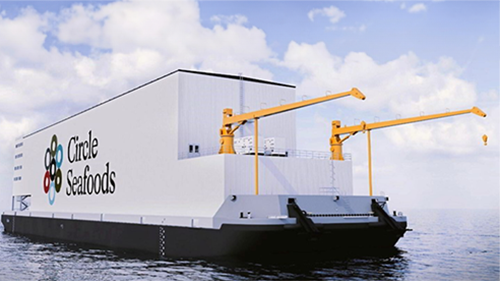Circle Seafood’s business model represents a groundbreaking advancement in the wild salmon industry, striving to bolster harvesters' incomes, enhance product quality for consumers, and minimize waste and spoilage that is persistent throughout the existing supply chain. By moving the supply chain to the fisheries, their innovative solution promises positive, enduring change within Alaska's wild salmon industry. Circle Seafoods will construct a salmon processing facility on top of an existing barge in Aberdeen, Washington, which is also be the location of their off-season operations. Both the construction and processing facility will generate healthy social economic benefits the Aberdeen community and Alaskan salmon fishers, alike.
NCIF contributed $2.5MMof debt toward the endeavor, which will be used for the construction of Circle Seafood's inaugural facility. This strategic financial intervention effectively addresses the project's entire funding requirement, facilitating the realization of the $36 MM total project cost.
The collaboration between NCIF and Circle Seafood reflects a shared commitment to fostering economic, social, and environmental prosperity in Alaska's rural communities. By partnering with Circle Seafood, NCIF actively supports the sustainable management and optimization of one of Alaska's most precious natural resources. Moreover, this collaboration serves as a catalyst for positive change in distressed regions and among marginalized populations in both rural Alaskan and Washington communities.
Project Impact
Economic Justice
- The business model of Circle Seafood project expects to increase pay to harvesters by an average of $9,200 per person by passing through supply chain efficiencies.
- The project is expected to create 166 Jobs (11 Full-Time Jobs to be retained and 82 Full-time Permeant Jobs and 73 Construction Jobs to be created) in severely distressed and rural community in Aberdeen, WA.
Environmental Justice
- It is expected that Circle Seafood business model will help reduce ~110M lbs. ~419M lbs. of CO2 annually once multiple barges are retrofitted and operating at full capacity.
- 47% fewer GHG emissions vs. legacy supply chain.
- 70%+ fewer GHG emissions than flown fresh salmon (which is expected to be the most comparable in quality).
- In addition, wild salmon industry in the US generate 46%-86% fewer GHG emissions than farmed salmon.
- Less plastic use: no need single-use plastic as part of the Circle Seafood model.
- 40% of the salmon harvested is either damaged or goes bad before it reaches a consumer. Circle Seafood model is expected to keep fresh and make use of nearly 100% of each fish it processes.
Racial Justice
- Increase income for Native Alaskan fishermen. Among more than 16,000 fishermen that are Alaskan Resident, more than 15% are Native Alaskan.
Partners:
NCIF: $2.5MM loan participation
Native American Bank: $5MM
Clearinghouse CDFI: $5MM
Steward: $1.5MM

